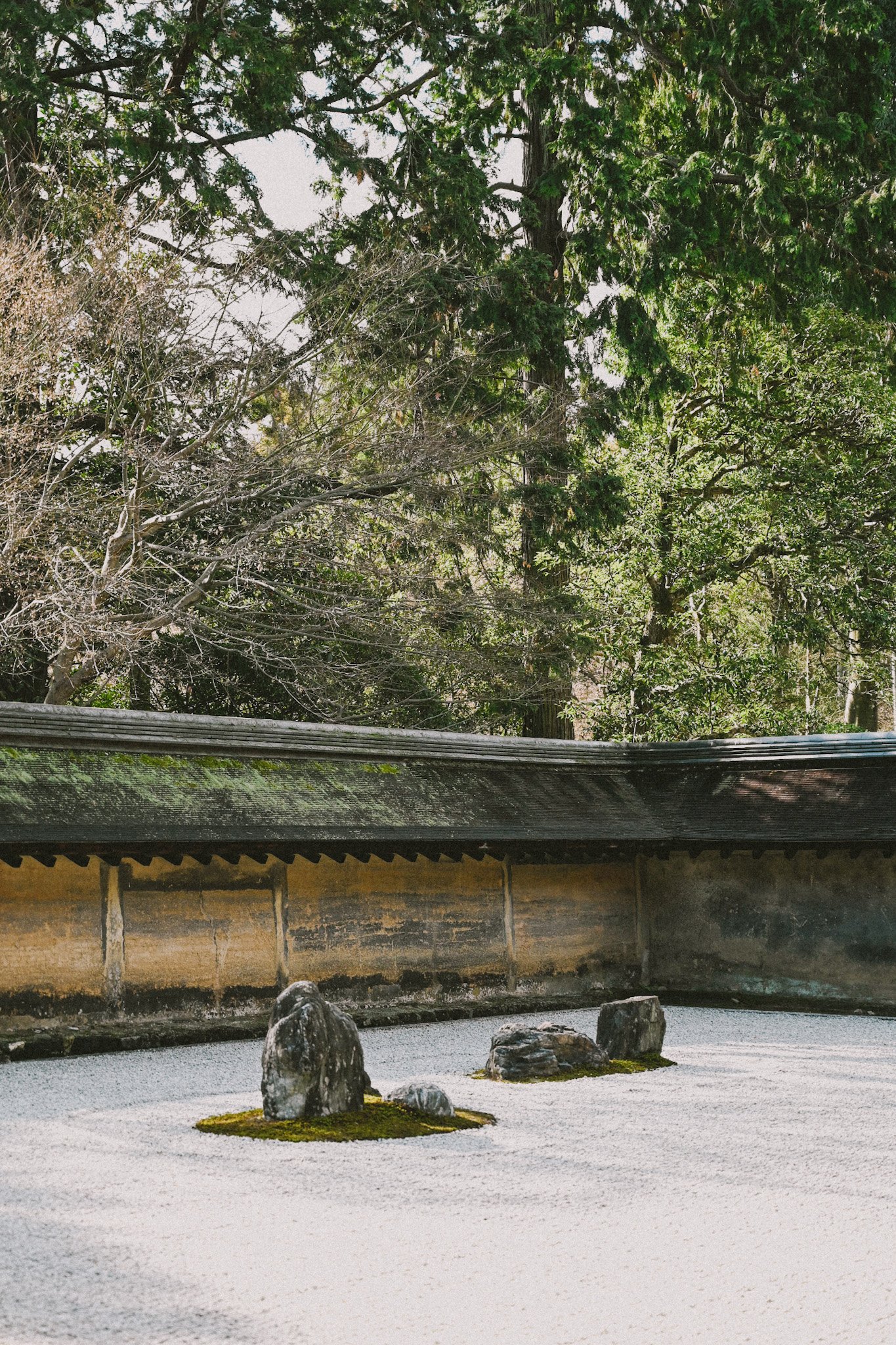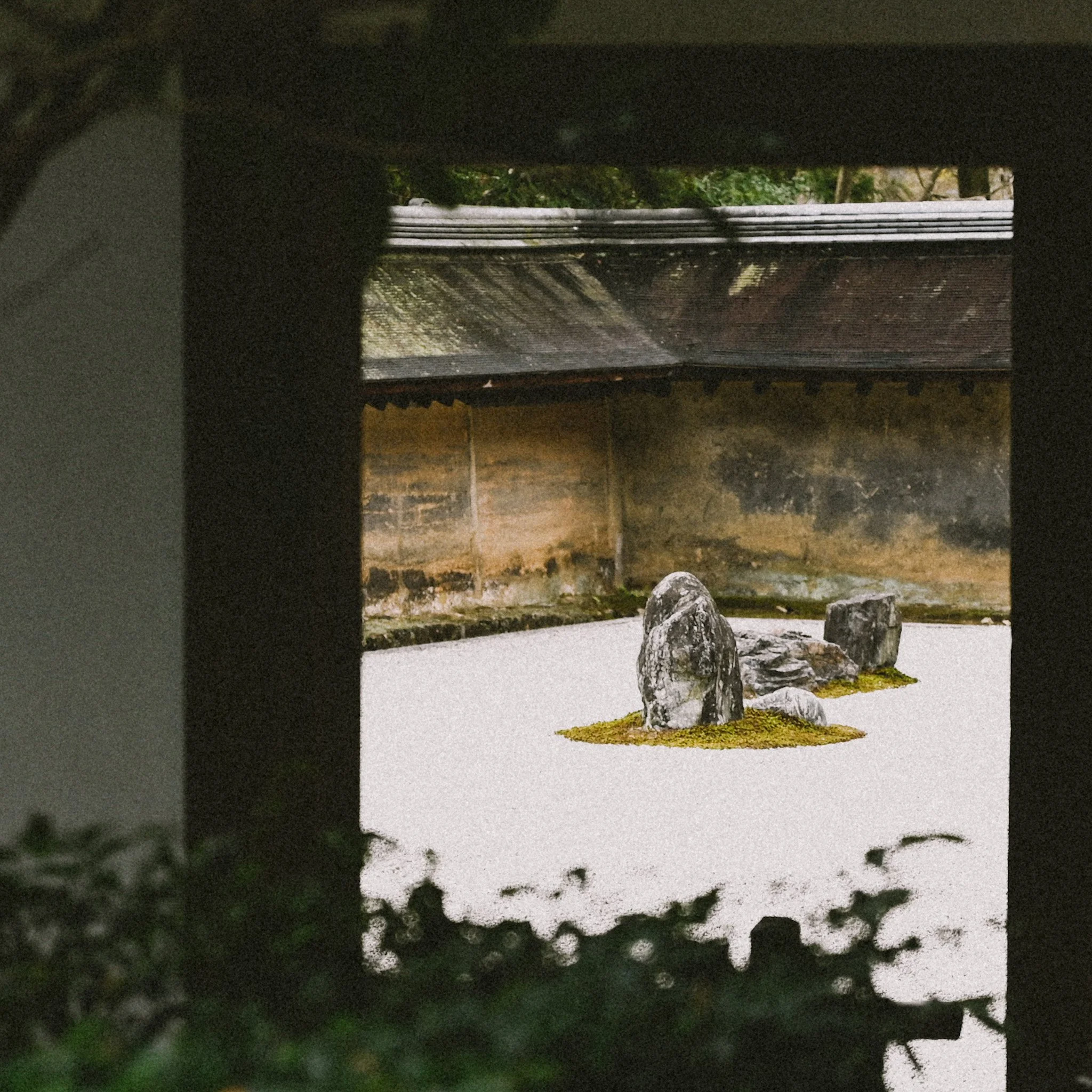The Garden of Contentment
“I learn only to be contented.”
The quote greets you as you enter the iconic rock garden in Kyoto’s Ryoanji Temple, where many pay a fee to observe the 15 pieces of rock that rest within the compounds of a beautiful Zen garden. Many who have visited this garden were perhaps more intrigued by the 15 pieces of rock than the quote. But as I stepped into the garden with the quote still fresh in my mind, I couldn’t help but question its relation to the environment. Was it simply random and unrelated, or was it another Zen Koan waiting to be deciphered? I convinced myself that the answer lay within the 15 pieces of rock and how they were arranged and was determined to find it.
I began by securing a spot at the viewing platform where I thought I had a bird’s eye view of the garden and of the 15 pieces of rock. It might sound like a simple task, but alas – after an entire hour of searching, tiptoeing, crouching down and relocating multiple times, I came to a realization that regardless of where I was, that I could only catch a glimpse of 13 or 14 pieces of rock at any point in time. Never once, could I see all 15 pieces together. Some were either blocked by their taller counterparts, or simply, not within my line of vision. I figured then, that trying to successfully locate all 15 rocks was probably more intriguing than unravelling the mystery behind the purpose of the garden or the quote. Most visitors around me were occupied with taking pictures or moving around the viewing platform – busy counting the rocks. Few were appreciating the quietude and the tranquility of the space.
Meanwhile, I arrived at the answer to my first question – about why the 15 pieces of rock were arranged in this manner. I concluded that the rocks were there to move us, quite literally. Knowing that 15 pieces of rock were present in the garden yet being unable to see them all makes you really keen on hunting for the missing piece. In the process and with each time you move, the garden rewards you with a completely different landscape and perspective of itself. As such, even a rock garden that feels so immovable and stagnant is still able to morph.
To side track a little from the garden and its rocks, I would recommend visitors to Kyoto who are keen on culture to try to visit gardens of all sorts — big and small. Each garden is designed in a manner for you to realise something greater and more profound than the garden itself. In encountering these physical spaces and the arrangement of nature within it, one will be enlightened by a discovery of sorts. The rock garden in Ryoanji is no exception.
I first learnt about this rock garden in the book ‘Japan Japanese’ by Helmut Schimd. In the last chapter, the author mentioned a rock garden – arranged to such perfection and harmony that the presence of the garden vanishes, and one only experiences themselves within that space. Since then, visiting this temple has been on my bucket list. An example of the kind of harmony the author was referring to is how the rocks in the garden are positioned in a manner that celebrates the empty spaces between each cluster. As the author describes, rather being a garden of rocks – a garden of MA (space) would be more appropriate. In other words, the rocks are there to allow one to realize the beauty of space.
Religiously, Japanese believe that gods dwell in empty spaces, and that it is an honor to have the gods visiting your space. As such, empty spaces are often deliberately created in Japanese architecture and landscaping and take precedence over filled or intended spaces. Being able to create such empty spaces without designated purposes is the epitome of these disciplines in Japan. As modern city dwellers where space is scarce and every square inch of a shoe box apartment counts, the thought of leaving intentional voids would be ludicrous. However, at Ryoanji Temple’s garden of rocks, one could experience such extravagance without the guilt of having empty spaces unfilled.
As I left the garden, my second question – the garden’s relationship with the quote, was answered.
Perhaps, on a deeper level, the purpose of the garden was for one to realise that space, at times, equates to our desires – like an empty glass always waiting to be filled. The garden allows us a glimpse into a side of life that is free from desires, which at times, can be much more liberating. Emptiness need not necessarily always be filled, and when we not busy filling these voids in our lives, that we can truly be content with what we already have.
RYoAN-JI 龍安寺
13 RYOANJI GORYONOSHITACHO
UKYO WARD, KYOTO
616-8001, JAPANTEXT AND Images By Anatomy of things



